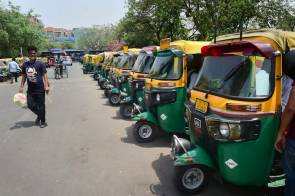About the magnificent tiger
20 November 2023 2 Comments
 It had been 10 years since my last trip to India, and during a recent visit I witnessed a massive change and made new observations every single day. Being in Bangalore on business I had an action packed week of Business Development; now I am trying to put in a simple picture what this week was like.
It had been 10 years since my last trip to India, and during a recent visit I witnessed a massive change and made new observations every single day. Being in Bangalore on business I had an action packed week of Business Development; now I am trying to put in a simple picture what this week was like.
The one image that regularly is coming back to my memory is that of a tiger, building up energy and being ready to leap forward.
As the Tiger is the national animal of India, the website of the Indian Government says: “The magnificent tiger, Panthera tigris is a striped animal. … The combination of grace, strength, agility and enormous power has earned the tiger its pride of place as the national animal of India.”
These attributes are very much in line with my observations on this trip. I wouldn’t say those are new or didn’t exist previously. However, the strength and agility can now be better observed and this massive momentum can be detected everywhere in society and economy.
The Indian economy moves at an amazing speed, supported by easy yet functional communications and transactions and very pragmatic solutions to daily challenges.
 As an example, the omni-present Auto Taxis (Auto Rikshaws) since 2022 can be booked with the Uber-style Mobile App Namma Yatri that facilitates 100k rides per day with zero commission. 100% of the fare goes to the driver.
As an example, the omni-present Auto Taxis (Auto Rikshaws) since 2022 can be booked with the Uber-style Mobile App Namma Yatri that facilitates 100k rides per day with zero commission. 100% of the fare goes to the driver.
 Behind the quick digital payments is the unique Indian payment system PhonePe that processes more than 100 Million transactions a day. For reference, the going rate for those Auto Rikshaws is INR 11 (0,12 €) per kilometer and we are talking fares in the value of 1-3 € per trip.
Behind the quick digital payments is the unique Indian payment system PhonePe that processes more than 100 Million transactions a day. For reference, the going rate for those Auto Rikshaws is INR 11 (0,12 €) per kilometer and we are talking fares in the value of 1-3 € per trip.
On a larger scale business and innovation level there is an amazing creativity and energy to innovate and explore new business models. All that is fueled by a very collaborative and inclusive yet sustainable investment climate.
India as of today lists 108 Unicorn Startups (> $1bn evaluation). The IDU Bank’s half yearly report on the Indian economy, observes that despite significant global challenges, India was one of the fastest-growing major economies in FY22/23 at 7.2%. India’s growth rate was the second highest among G20 countries and almost twice the average for emerging market economies.
If you want to get more details, check out the analyses from the Worldbank and S&P Global.
 The backdrop to this are my personal experiences from business meetings and professional exchanges. I captured a great amount of energy and desire to set things in motion in a very professional manner and at great speed and agility. Most of the folks I got to work with have two or three jobs and engagements going in parallel, and all are open to share and listen to feedback and comments.
The backdrop to this are my personal experiences from business meetings and professional exchanges. I captured a great amount of energy and desire to set things in motion in a very professional manner and at great speed and agility. Most of the folks I got to work with have two or three jobs and engagements going in parallel, and all are open to share and listen to feedback and comments.
All of that in a very positive and humble mode.
These are powerful testimonies of grace, strength, agility and enormous power that left me energized and inspired.
I can see the magnificent tiger ready to leap forward.

 The provoking abstract of the recent IBV Study on the role of the CDO:
The provoking abstract of the recent IBV Study on the role of the CDO: 

